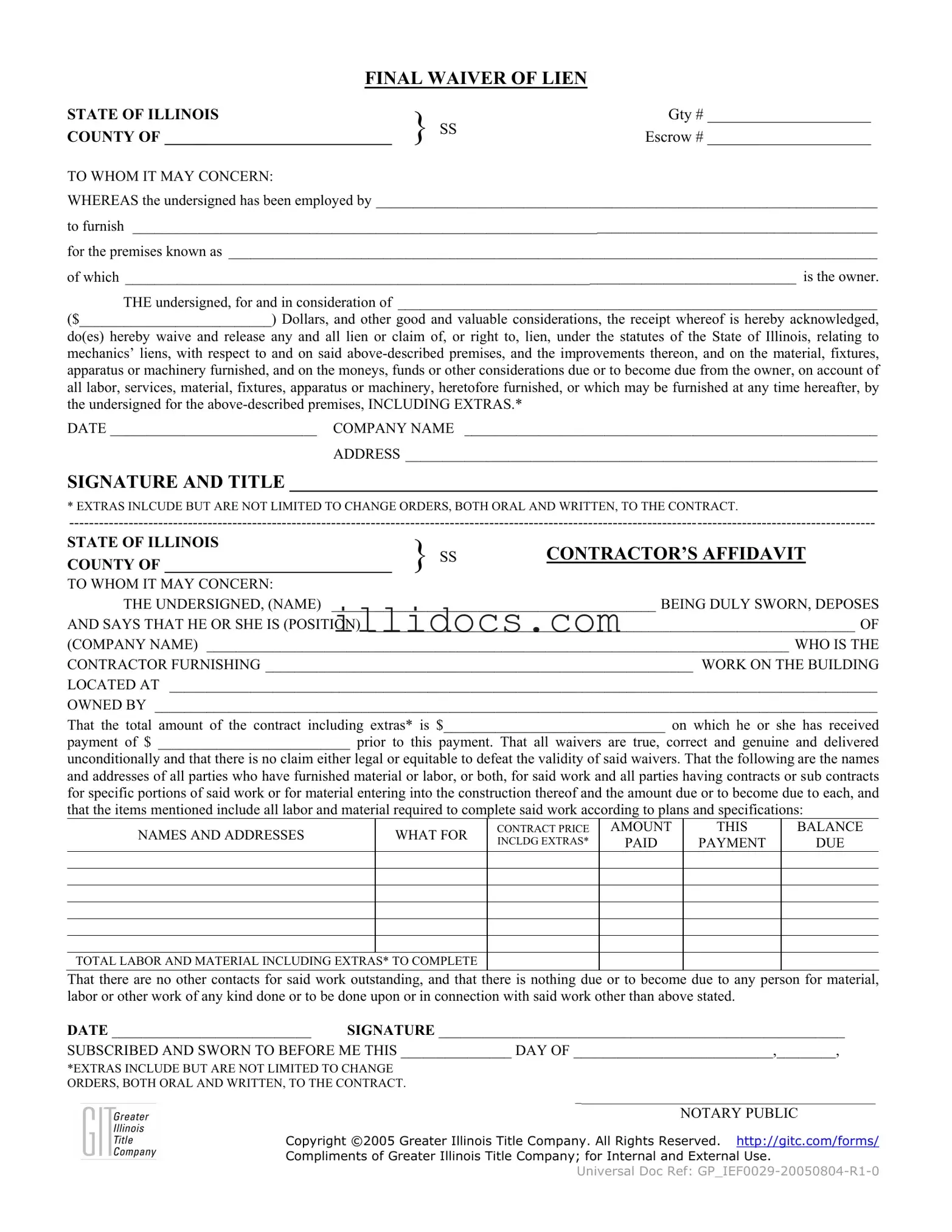What is the Illinois Final Waiver of Lien form?
The Illinois Final Waiver of Lien form is a legal document used by contractors, subcontractors, and suppliers to formally relinquish their right to file a mechanics' lien against a property. This waiver is typically issued once a contractor has received full payment for the work performed or materials supplied. It serves as proof that the contractor has been compensated and releases any claims against the property for the work done.
When should I use the Final Waiver of Lien?
This form should be used after the completion of a project and upon receiving the final payment. It is essential to provide this waiver to the property owner or general contractor to ensure that they have clear title to the property without any outstanding claims. Using this waiver helps protect the owner from future lien claims related to the project.
Who needs to sign the Final Waiver of Lien?
The form must be signed by the contractor or subcontractor who performed the work or provided the materials. The individual signing should be in a position to legally bind the company, such as an owner or authorized officer. Their signature confirms that they have received payment and are waiving any future claims against the property.
What information is required on the form?
The form requires several key pieces of information, including the names of the contractor and property owner, the address of the property, the total contract amount, and the payment received. Additionally, it should include a description of the work performed or materials supplied. This information ensures clarity and accuracy in the waiver.
What are "extras" in the context of this waiver?
In this context, "extras" refer to any additional work or materials that were not included in the original contract but were agreed upon later. This can include change orders, whether communicated orally or in writing. The waiver covers these extras to ensure that all claims related to the project are released.
Is notarization required for the Final Waiver of Lien?
Yes, notarization is typically required. The form must be signed in front of a notary public, who will verify the identity of the signer and witness the signing. This step adds an extra layer of authenticity and legal validity to the waiver, making it more enforceable.
What happens if I do not use the Final Waiver of Lien?
If you do not use the Final Waiver of Lien, you may retain the right to file a mechanics' lien against the property. This means that if you do not receive payment, you could potentially claim a legal interest in the property to secure payment. However, this can lead to disputes and complications, so it is generally advisable to provide the waiver once payment is received.
Can I still file a lien after signing the Final Waiver of Lien?
No, once you sign the Final Waiver of Lien, you relinquish your right to file a lien for the work covered by that waiver. It is crucial to ensure that you have received full payment before signing, as doing so will prevent any future claims related to that project.
Where can I obtain the Illinois Final Waiver of Lien form?
The Illinois Final Waiver of Lien form can typically be obtained from legal form providers, title companies, or online legal resources. It is important to ensure that you are using the most current version of the form to comply with Illinois state laws.
